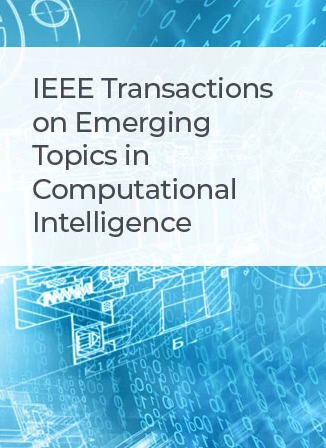基于多目标进化算法的三维载荷约束下分步配送车辆路径优化
IF 5.3
3区 计算机科学
Q1 COMPUTER SCIENCE, ARTIFICIAL INTELLIGENCE
IEEE Transactions on Emerging Topics in Computational Intelligence
Pub Date : 2024-11-28
DOI:10.1109/TETCI.2024.3499992
引用次数: 0
摘要
具有三维装载约束的分体配送车辆路径问题(3L-SDVRP)以车辆装载效率最大化和总行驶距离最小为目标,将路径问题与包装问题相结合。解决3L-SDVRP对物流和运输行业至关重要。然而,在3L-SDVRP的元启发式算法中,特别是在有限的计算资源下,实现探索(寻找新解)和利用(提炼已知解)之间的适当平衡仍然是一个挑战。此外,多目标优化算法在3L-SDVRP中的应用仍然是一个很大程度上未开发的领域,特别是考虑到两个相互冲突的目标之间的内在权衡。为了解决这些问题,本文提出了一种新的基于pareto的并行交叉和分层邻域过滤突变进化算法(peace -HNF),该算法采用了新颖的分层邻域过滤(HNF)突变。HNF突变利用不同的邻域结构产生子代,采用分层策略对非支配等级高的个体进行优先排序,并引入子代过滤过程以节省计算资源。HNF允许peace -HNF在保持勘探优势的同时提高其开采能力,实现平衡性能。跨各种问题实例(总共242个实例)与最先进的算法进行比较,证明了peace - hnf的有效性。进一步的分析强调了HNF突变在提高算法性能方面的关键作用。HNF突变的应用可以从peace -HNF扩展到其他复杂的优化问题。本文章由计算机程序翻译,如有差异,请以英文原文为准。
PEAC-HNF: A Novel Multi-Objective Evolutionary Algorithm for Split Delivery Vehicle Routing With Three-Dimensional Loading Constraints
The Split Delivery Vehicle Routing Problem with Three-Dimensional Loading Constraints (3L-SDVRP) integrates routing and packing problems, aiming to maximize the vehicle load efficiency and minimize the total travel distance. Solving 3L-SDVRP is critical for logistics and transportation industries. However, achieving an appropriate balance between exploration (searching for new solutions) and exploitation (refining known solutions) in metaheuristic algorithms for 3L-SDVRP, especially under limited computational resources, remains challenging. Furthermore, the application of multi-objective optimization algorithms to the 3L-SDVRP remains a largely unexplored area, particularly when considering the inherent trade-offs between the two conflicting objectives. To address these challenges, this paper introduces a new Pareto-based Evolutionary Algorithm with Concurrent crossover and Hierarchical Neighborhood Filtering mutation (PEAC-HNF), distinguished by its novel Hierarchical Neighborhood Filtering (HNF) mutation. The HNF mutation uses diverse neighborhood structures to generate offspring, adopts a hierarchical strategy prioritizing individuals with higher nondomination ranks, and incorporates an offspring filtering process to save computational resources. HNF allows PEAC-HNF to improve its exploitation capabilities while maintaining exploration strengths, achieving a balanced performance. Comparisons with state-of-the-art algorithms across various problem instances (242 instances in total) demonstrate the effectiveness of PEAC-HNF. Further analysis highlights the critical role of the HNF mutation in enhancing algorithmic performance. The utilization of the HNF mutation can extend beyond PEAC-HNF to other complex optimization problems.
求助全文
通过发布文献求助,成功后即可免费获取论文全文。
去求助
来源期刊

IEEE Transactions on Emerging Topics in Computational Intelligence
Mathematics-Control and Optimization
CiteScore
10.30
自引率
7.50%
发文量
147
期刊介绍:
The IEEE Transactions on Emerging Topics in Computational Intelligence (TETCI) publishes original articles on emerging aspects of computational intelligence, including theory, applications, and surveys.
TETCI is an electronics only publication. TETCI publishes six issues per year.
Authors are encouraged to submit manuscripts in any emerging topic in computational intelligence, especially nature-inspired computing topics not covered by other IEEE Computational Intelligence Society journals. A few such illustrative examples are glial cell networks, computational neuroscience, Brain Computer Interface, ambient intelligence, non-fuzzy computing with words, artificial life, cultural learning, artificial endocrine networks, social reasoning, artificial hormone networks, computational intelligence for the IoT and Smart-X technologies.
 求助内容:
求助内容: 应助结果提醒方式:
应助结果提醒方式:


